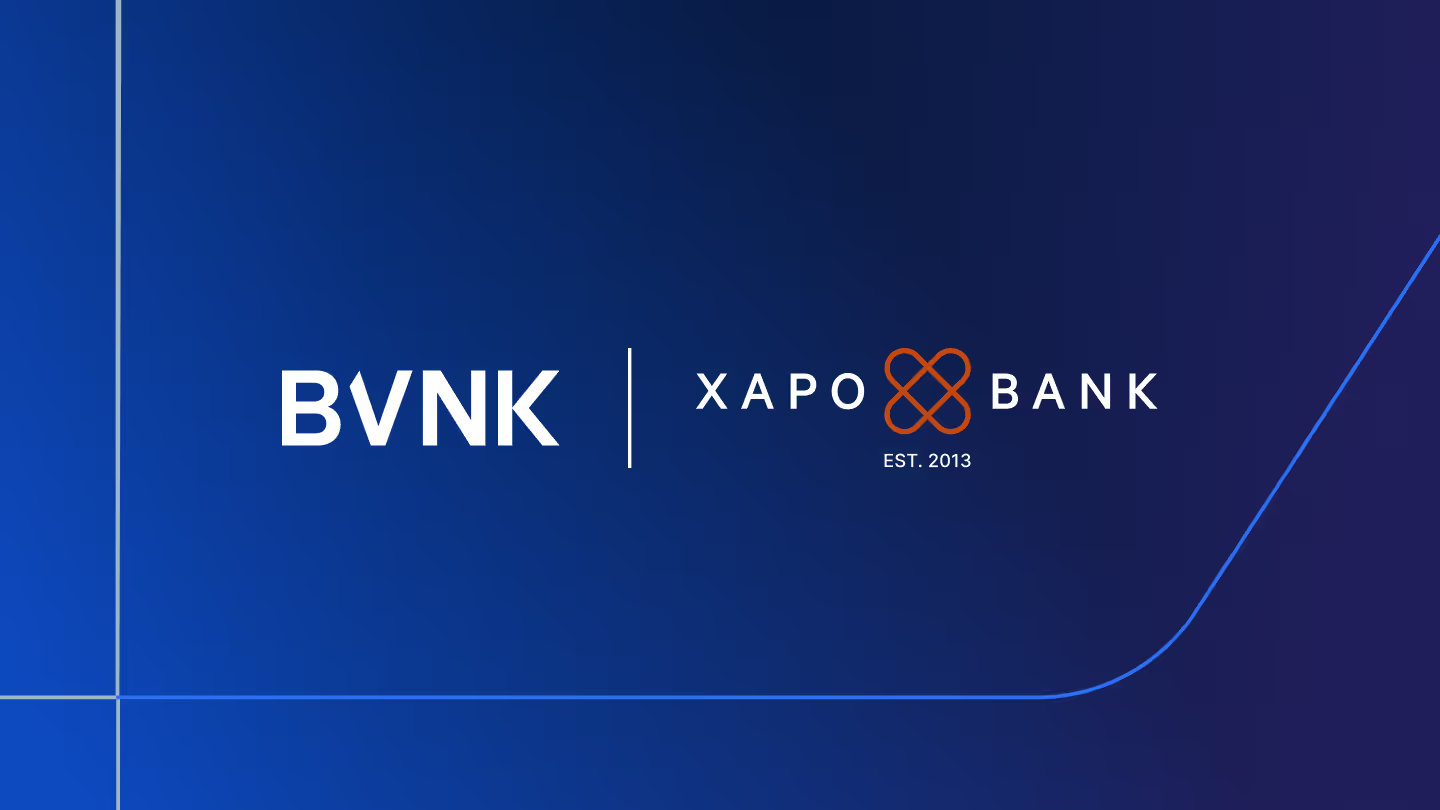What’s next for global money movement and digital assets? 8 lessons from Currency NYC 2023
From regulatory drivers to stablecoin use cases and the success of CBDCs, these are our 8 top takeaways from Currency NYC.

We connected with leaders from across payments and digital assets in the US last week for Currency NYC. We discussed the state of global regulation with PwC, Paul Hastings and Silvergate Bank, assessed the utility of stablecoins with CoinDesk, B2C2 and BitGo, and spoke to Paxos on the what, why and how of PYUSD.
Here are our top takeaways from the day. Full session videos with all the insights from Currency NYC 2023 will be available soon on our Youtube channel.
1. Regulators are on different missions when it comes to digital assets.

The global regulatory picture for digital assets is uneven – but for good reason, said Dana Syracuse, Partner from law firm Paul Hastings: “Some regulators are about consumer protection, some are about investor protection, some are about both. Different regulators are interested in different products.”
It’s time to move past soundbites and accept that full clarity is unlikely, added Dana: “You’ll never get clarity across the entire industry because there are different types of products and new products emerging at different times. And ‘regulatory lag’ is a thing… Legislators and regulators need to learn a product, understand how to licence, how to supervise and how to staff up around that. All of those things take time.”
Regulating an industry too soon risks adding to confusion, said BVNK’s SVP Financial Crime Compliance and Group MLRO, Marta Lia Requeijo: “We need to understand where the products and the industry is going… then we can say to consumers: this is regulated, this is unregulated, these are the risks ... we need to let innovation come first, then regulation can follow.”
But there are also risks associated with waiting too long to regulate, pointed out Silvergate Bank General Counsel Paris Cribben: “In the US, both sides of the political aisle want the US dollar to remain strong. But if we don't get stablecoin legislation in the US in the next year or so, we run the risk of seeing more entities move offshore.”
.avif)
Get payments insights straight to your inbox
2. The market needs predictability of licensing and clarity of roles.

The proposed MiCA regulation in the EU offers a unified framework for digital assets. In the UK, the recent stablecoin proposal will bring digital assets in scope of the Payment Service Regulation, explained BVNK’s Marta Lia Requeijo: “This will bring a lot of clarity to the industry in terms of issuance and custody and will help businesses understand how to position products and services. Anything that is predictable will bring trust to the market.”
Another key benefit of the UK's stablecoin proposal is the clarity it provides on roles and responsibilities, added Marta. “There are countries that have one regulator, there are countries that have several. The FCA, the Bank of England and the Payment Systems Regulator (PSR) have set out that they will have different responsibilities. For the industry, it's very important that you know who you're dealing with, and for what.”
3. Stablecoins are efficient for moving capital.

Despite being a relatively small portion of global transaction volumes, stablecoins make up around 70 percent of on-chain transaction volume, said Matthew Ballensweig, Managing Director and Head of the Go Network at digital asset custodian, BitGo: “Stablecoin markets are very real, but even more important is the velocity at which they power the ecosystem – they’re very relevant in terms of how capital is moving.”
For liquidity provider B2C2, the benefit is stablecoins is clear, said CEO Nicola White: “When the market moves, we can reduce our exposure by settling with clients on the weekend… so we're not overextending credit to the market. The key to that is being able to settle 24/7/365 with stablecoins.”
For B2C2's clients, stablecoins also serve a purpose: “We have quite a lot of clients who don't have access to an abundance of banking rails… so stablecoins provide an alternative,” said Nicola. “We used to think that having 2-3 dollar or euro banks was enough, but the events of March showed us that the right number is probably 5-6 now.”
BitGo’s Matthew Ballensweig, pointed to the efficiency of stablecoins for international transfers: “Many of our clients find it more efficient to use stablecoins to go in and out of their local currencies into US dollars, rather than using existing international remittance rails.”
In some cases, stablecoins are also being used for payouts, added BVNK Co-Founder Chris Harmse: “For some of our remittance customers, it's more efficient to use a stablecoin rail to move money into an emerging market. But the last mile payment then becomes the pain. If you can switch that to stablecoins in markets where local consumers are happy to receive a digital dollar, it's very beneficial.”
Michael Coscetta, Chief Revenue Officer at Paxos, agreed that stablecoins are taking everyday use cases and making them more efficient: “There was a great example on Twitter/ X: a guy sent money to an employee in Malawi. That employee received PYUSD instantly, and received 40 percent more Malawi currency by having it through PYUSD, than he did through Western Union."
4. Stablecoins are emerging as a settlement currency for businesses.

Merchant acquirers are starting to settle their merchants and partners in stablecoins, said BVNK’s Chris Harmse. Visa’s recent announcement that it’s expanding its stablecoin settlement pilot to merchant acquirers has “rubber stamped” stablecoins as a settlement currency, he added: “When someone spends with their card, it goes from issuer to Visa, then to a merchant acquirer who settles the merchant. That all happens very quickly in terms of messaging, but there's a huge treasury operation behind it which can be a nightmare… With stablecoins, Visa has unlocked a new 24/7 settlement rail, which reduces the need to prefund for a lot of issuers.”
BitGo’s Matthew Ballensweig agreed: “Anytime that you have the on and off ramp, that's when it becomes inefficient. So if you can go end-to-end on stablecoins, that's when you can really change the game.”
5. 2023 highlighted the need for more transparency from stablecoin issuers.

Incidents of stablecoins depegging in 2023 raised questions around transparency from issuers, says B2C2’s Nicola White: “We think a lot about a stablecoin’s recent proof of reserves and how confident we are about the banks where they're holding the assets – because not only do you have to worry about them being backed one to one, but the banking system is not as secure as we once thought it was. That is just a fact that we need to deal with and we need to price into our models.”
Despite being criticized for a lack of transparency around its governance, Tether’s market cap is 4x that of USDC, added Bitgo’s Matthew Ballensweig. “Tether still represents a huge part of the way money moves in crypto today. That being said, I do think we're moving towards greater scrutiny… My hypothesis is that assets that are regulated but capital efficient and accessible, will take market share methodically and systematically from Tether over time.”
Michael Coscetta, Chief Revenue Officer at Paxos (the issuer of PYUSD stablecoin), pointed out that parity in how stablecoins are governed will help create interoperability. “A lot of the regulated partners we work with want a regulator overseeing the action of that token… Once you have uniform standards of reserve management, issuance and compliance, you can get to interoperability, which means you can have an infinite amount of stablecoins – as long as there's oversight as to how they're issued and managed.”
6. 2024 could see the rise of interest-bearing stablecoins.

Not being able to generate yields on stablecoins is currently a blocker to adoption, said BitGo’s Matthew Ballensweig, but things could change in 2024: “If you think about traditional markets… you're getting the yield benefit of holding securities, but you're also able to use them from a capital efficiency perspective. That's not really being implemented right now for stablecoins, but there are companies looking to solve for it.”
B2C2’s Nicola White predicted that in 2024 we’ll see “the joining of stablecoins and tokenised money market funds, especially with yields.”
Matthew Ballensweig agreed that next year could bring “the rise of native interest bearing stablecoins and the shepherding of those as assets as collateral to decrease market structure risk and increase capital efficiency, in institutional markets.”
7. Locally issued stablecoins will unlock new remittance use cases.

There’s an interesting opportunity for non-dollar issued stablecoins, said BVNK co-founder Chris Harmse, since 99% of stablecoins are dollars.
“If we see more locally issued stablecoins start to reach scale, like XSGD pegged to the Singapore dollar or EURC pegged to the Euro, it will unlock more remittance use cases. You do need a local issuer that can provide that one to one in the local market with some sort of standardised issuing body.”
B2C2’s Nicola White added: “It could open up a world of where can trade Canadian dollar on the weekend through stablecoins – which is really interesting because right now we just accumulate that over the weekend and look to hedge it when markets open up on Sunday night, but ultimately that's not efficient.”
8. The success of CBDCs depends on how long they take to get to market.
.avif)
Stablecoins have a head start on Central Bank Digital Currencies (CBDCs), and could be hard to displace, said B2C2’s Nicola White: “In any major currency we’re still a couple years off CBDCs – in the meantime private stablecoins are probably going to take that place… and once something becomes sticky, it's harder to unwind.”
Thinking about the success of CBDCs, we need to distinguish between two models being trialled, said BVNK’s Chris Harmse: “One is retail-driven where a consumer has an account with the central bank. The other is more like the banking system today, with a commercial bank facing a central bank, using CBDCs for interbank settlement – in my view the latter is more likely to happen since it doesn't displace commercial banks.”
Paxos’ Michael Coscetta added that CBDCs and stablecoins can coexist: “I think we’ll see a very wide spectrum of different models of CBDC. Can they coexist switch stablecoins? Absolutely. I think the only way both can really be sustainable is if they do coexist.”
Session videos with all the insights from Currency NYC 2023 will be available soon on our Youtube channel.
Latest news
View allGet payment insights straight to your inbox



.jpg)






.avif)


.jpg)





